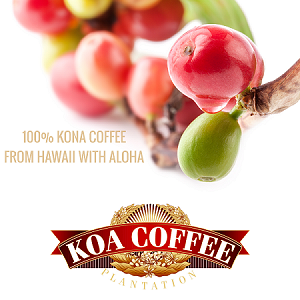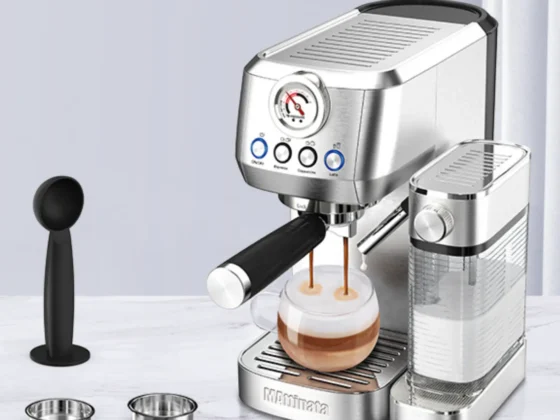In the diverse and ever-evolving world of coffee, the comparison of Cortado vs Café Con Leche stands out as a topic of particular interest for coffee aficionados and casual drinkers alike. These two distinct coffee beverages, each with their unique origins, flavors, and cultural significance, have captivated the tastes of people around the globe. This article delves into the intricacies of Cortado and Café Con Leche, exploring their histories, flavor profiles, nutritional aspects, global popularity, and the trends shaping their consumption. Whether you’re a seasoned barista, a coffee enthusiast, or simply curious about the differences and similarities between these two beloved drinks, this exploration offers a comprehensive understanding of what makes each of them special in their own right.
If reading feels like a chore, why not listen to the article instead?
- Introduction & Key Differences
- https://app.mysoundwise.com/tracks/16999297524517683e.mp3
- What is a Cortado?
- https://app.mysoundwise.com/tracks/16999298010628069e.mp3
- What is a Café Con Leche?
- https://app.mysoundwise.com/tracks/16999298341515513e.mp3
- The Origins and Cultural Significance
- https://app.mysoundwise.com/tracks/16999298673612451e.mp3
- Ingredients and Brewing Techniques
- https://app.mysoundwise.com/tracks/16999299091492920e.mp3
- Flavor Profiles and Sensory Experiences
- https://app.mysoundwise.com/tracks/16999299489572412e.mp3
- Nutritional Information and Health Considerations
- https://app.mysoundwise.com/tracks/16999299850524280e.mp3
- The Global Popularity and Trends
- https://app.mysoundwise.com/tracks/16999300181399775e.mp3
- Conclusion & FAQs
- https://app.mysoundwise.com/tracks/16999300515067073e.mp3
Café Con Leche vs Cortado: Key Differences
- Distinct Origins and Cultural Significance: While the Cortado originates from Spain, offering a balanced blend of espresso and milk, Cafe Con Leche, also from Spain, provides a richer combination of strong coffee and a higher proportion of milk.
- Flavor Profiles and Sensory Experiences: Both beverages offer distinct taste experiences. The Cortado is characterized by its delicate balance between the robustness of espresso and the softness of milk, whereas Cafe Con Leche presents a creamier and more intense flavor due to its higher milk content.
- Nutritional Information and Health Implications: Cortado, with its lower milk content, generally has fewer calories and a moderate caffeine level, while Cafe Con Leche, due to more milk, has higher calories and slightly less caffeine.
- Global Popularity and Evolving Trends: Both beverages enjoy widespread popularity across the globe, with various adaptations reflecting regional tastes.
- Differences in Preparation and Consumption: Understanding the differences in how these coffee drinks are prepared, including their ingredient ratios and brewing techniques, is essential. The article also discusses the best times and food pairings for enjoying these beverages, enhancing the overall coffee-drinking experience.
What is a Cortado?

A Cortado is a distinctive type of coffee that originated in Spain and has since become popular worldwide. Here’s a detailed look at its characteristics:
- Composition: The Cortado is an espresso “cut” with a small amount of warm milk. (1) The key here is the equal balance between espresso and milk, which softens the acidity and intensity of the espresso.
- Serving Size: Typically, it’s served in a small glass or cup, with the total volume ranging from 4 to 6 ounces. This compact serving size highlights the coffee’s flavor while providing just enough milk to create a harmonious blend.
- Milk Texture: Unlike lattes or cappuccinos, the milk in a Cortado is lightly steamed and not frothy. This results in a silkier texture that complements, rather than overwhelms, the espresso.
- Flavor Profile: The Cortado coffee offers a balanced taste where the natural flavors of the espresso are prominent, but the harshness is mellowed by the milk. This makes it ideal for those who enjoy the essence of espresso but prefer a smoother, less intense experience.
What is a Café Con Leche?

Cafe Con Leche, another beloved coffee drink with Spanish origins, is known for its comforting and rich flavor. The term “Café Con Leche” translates to “coffee with milk,” which is a straightforward description of what this drink entails. Below are the key elements that define this lovely beverage:
- Composition: This drink consists of strong coffee, often in the form of espresso, mixed with an equal or greater part of scalded milk. The proportion of coffee to milk is what sets it apart from other similar beverages. (2)
- Serving Size and Style: This concoction is usually served in a larger cup or mug compared to a Cortado. This is because the quantity of milk is higher, making it a larger beverage overall.
- Milk Preparation: The milk used in this coffee drink is scalded, not just steamed. This means it is heated to just below boiling, which changes the flavor and texture of the milk, making it richer and creamier.
- Flavor Profile: The drink is known for its rich and creamy texture, with the strong coffee providing a robust backdrop. The high ratio of milk tempers the intensity of the espresso, resulting in a smooth, comforting beverage that’s perfect for a leisurely breakfast or a soothing afternoon break.
The Origins and Cultural Significance
The rich tapestry of global coffee culture is vividly illustrated through the histories and variations of two iconic beverages: the Cortado and Cafe Con Leche. Cortado coffee, capturing the cortado meaning of ‘cut’ in Spanish, is a testament to the art of balancing the boldness of espresso with the softness of milk. On the other hand, the Spanish milk coffee, encapsulating the cafe con leche meaning of ‘coffee with milk’, represents a comforting, rich blend that has become a morning ritual in many cultures. Both beverages have transcended their original contexts, evolving and adapting as they have spread globally, yet retaining the core characteristics that make them beloved and distinct.
Historical Roots of Cortado

The Cortado, with its roots deeply embedded in Spanish coffee culture, is a beverage that epitomizes the balance between strength and smoothness in coffee. Understanding its history helps appreciate the beverage’s unique place in the world of coffee:
- Spanish Origin: As previously discussed, the name ‘Cortado’, meaning ‘cut’ in Spanish, refers to the practice of ‘cutting’ espresso with a small amount of milk. This method was developed to reduce the bitterness and acidity of espresso.
- Evolution in Spain: Originally popular in Spain and Portugal, the Cortado was a way for coffee drinkers to enjoy a mid-day espresso without the harshness of a straight shot. It became a staple in local cafes, embodying the relaxed, social aspect of Spanish coffee culture.
- International Spread: The simplicity and elegance of the Cortado have led to its adoption in coffee cultures around the world. Each region adds its own twist, but the essence of the Cortado remains the same – a harmonious blend of espresso and milk.
Café Con Leche’s Place in Coffee History

This delectable coffee drink holds a special place in the history of coffee, particularly within Spanish and Latin American cultures:
- Spanish Beginnings: As previously mentioned, the term ‘cafe con leche’, translating to ‘coffee with milk’, is a direct description of the drink. It has been a breakfast staple in Spain for centuries, symbolizing the start of a new day.
- Latin American Influence: When Spanish colonists brought coffee to the Americas, this drink became a prominent feature in Latin American households. It evolved to suit local tastes, often involving locally grown beans and variations in milk preparation.
- Cultural Symbol: Beyond just a beverage, this delicacy symbolizes hospitality and warmth in many cultures. It is often enjoyed in a communal setting, reflecting the importance of coffee as a social ritual.
Regional Variations and Adaptations

Both of these beverages have seen various regional adaptations, reflecting the diversity of global coffee cultures:
Cortado Coffee Around the Globe:
- Gibraltar coffee: Originating in San Francisco, Gibraltar is named after the glass it’s served in. It’s similar to a traditional Cortado but served in a taller, Libbey Gibraltar glass. This version has gained popularity in specialty coffee shops in the United States.
- Piccolo Latte: Popular in Australia, the Piccolo Latte is very similar to a Cortado but typically served in a small latte glass. It’s made with a single espresso shot and a smaller amount of steamed milk, resulting in a stronger coffee flavor.
- Cortadito: A Cuban variation, the Cortadito often includes a bit of sweetened condensed milk. This adds a distinct sweetness and richness, making it a popular choice in Cuban and other Latin American coffee cultures.
Café Con Leche Across Borders:
- Galão: In Portugal, the Galão is a lighter version of this coffee drink, served in a tall glass with one-quarter coffee and three-quarters foamed milk, making it milkier than the traditional Spanish milk coffee. (3)
- Cafe Latte: The Italian Latte, widely popular around the world, especially in the United States and Europe, is similar to this beverage but is made with espresso and more milk. It’s often served in a larger cup and can be flavored with syrups.
- Café con Panna: This is a variation where whipped cream is used instead of milk. It’s a richer, more dessert-like version, offering a different texture and sweetness level.
These adaptations illustrate the versatility and global appeal of these drinks, solidifying their place in the world of coffee.
Cortado vs Café Con Leche: Ingredients and Brewing Techniques
Delving into the world of coffee, one often encounters the question, what is a Cortado? or what is a Cafe Con Leche? These two distinct coffee drinks, each with their own unique appeal and cultural background, are not just about their ingredients but also about the art and technique of their preparation.
How to Make a Cortado

The Cortado, known for its balanced blend of espresso and milk, is a revered coffee drink. Understanding how to make a cortado involves mastering the ratio of coffee to milk and the right brewing technique:
Ingredients:
- Espresso: A double shot is typically used.
- Milk: A small amount, equal to the volume of the espresso.
Brewing Technique:
- Brew a double shot of espresso. The quality of the espresso is crucial here, as it forms the base of the drink.
- Steam the milk until it’s warm but not frothy. The texture should be smooth and silky, not thick like in a cappuccino or latte.
- Pour the steamed milk over the espresso, ensuring an even mix. The milk should ‘cut’ the espresso, softening its intensity without overshadowing its flavors.
How to Make a Café Con Leche

Coffee with milk, a comforting and rich beverage, is a staple in many cultures. Making this delightful concoction involves a few simple steps:
Ingredients:
- Strong coffee or espresso: Depending on preference, either strong brewed coffee or a shot of espresso can be used.
- Milk: Equal or greater part of milk compared to coffee. Whole milk is preferred for its richness.
Brewing Technique:
- Brew the coffee or espresso. The strength of the coffee should be robust enough to balance the milk.
- Heat the milk until it’s hot and slightly frothy. Unlike the Cortado, more milk is used, and it’s heated to a higher temperature.
- Combine the hot milk with the brewed coffee in a large cup or mug. The ratio is usually 1:1, but it can be adjusted according to taste.
Best Time to Drink Cortado and Café Con Leche

The best time to enjoy these beverages depends on personal preference and cultural practices:
Cortado:
- Morning or early afternoon: Due to its strong espresso base, it’s ideal for a morning pick-me-up or an early afternoon break.
- After meals: In some cultures, a Cortado is preferred after lunch or dinner to aid digestion and provide a gentle energy boost.
Cafe Con Leche:
- Breakfast time: Traditionally, this coffee drink is enjoyed during breakfast, paired with pastries or toast.
- Late morning or afternoon: It’s also suitable for a late morning break or a leisurely afternoon pause, especially in cultures where this concoction symbolizes a moment of relaxation.
In summary, whether it’s understanding how to make a cortado or how to make cafe con leche, both drinks offer unique experiences. The Cortado coffee, with its espresso-focused approach, and Cafe Con Leche, with its comforting richness, cater to different preferences and times of the day.
Flavor Profiles and Sensory Experiences
Exploring the world of coffee, particularly through drinks like Cortado and the Spanish milk coffee, is not just about taste; it’s an entire sensory journey. This section delves into the tasting notes and sensory characteristics of these beloved coffee drinks, exploring how they tantalize the palate and complement various foods.
Tasting Notes: Cortado’s Delicate Balance

The Cortado, as one of the most refined espresso drinks, offers a unique flavor profile that hinges on the delicate balance between its two key ingredients:
- Espresso Base: The foundation of a Cortado is a strong, well-brewed espresso. The espresso brings a rich, robust flavor, with notes that can range from slightly fruity and acidic to deeply chocolatey or nutty, depending on the beans used.
- Milk Interaction: The addition of a small amount of warm milk softens the espresso’s bitterness and acidity. This creates a harmonious blend where neither the espresso nor the milk overwhelms the other.
- Texture and Temperature: The texture is smoother than a straight espresso shot but without the frothiness of larger milk-based drinks. The temperature is typically warmer than a cafe latte, highlighting the espresso’s flavors.
- Overall Sensory Experience: Drinking a Cortado is about appreciating the subtleties of espresso in a softened, more approachable form. It’s ideal for those who enjoy espresso’s boldness but seek a milder, more nuanced experience.
Café Con Leche: A Journey of Creamy Intensity

This coffee drink, often associated with the concept of a Spanish latte or Spanish coffee, offers a different sensory journey:
- Coffee Strength: The use of strong coffee or espresso as the base gives this delectable drink a robust and invigorating quality. The coffee flavor is prominent, providing a rich backdrop for the milk.
- Milk Ratio and Effect: In contrast to a Cortado, this drink uses a higher ratio of milk, which results in a creamier, more velvety texture. The milk’s sweetness and creaminess significantly mellow the coffee’s intensity.
- Warmth and Comfort: The overall sensation of drinking this delectable beverage is one of warmth and comfort. It’s often richer and more filling than other types of espresso drinks, making it a perfect morning or mid-afternoon treat.
- Flavor Complexity: The balance between the coffee and milk in this coffee drink creates a complex flavor profile that can range from sweet and mild to rich and bold, depending on the preparation.
Pairing Food with Cortado and Café Con Leche

Both beverages can be wonderfully paired with various foods:
Cortado Pairings:
- Light pastries: Croissants, biscotti, or scones complement the Cortado’s delicate flavor without overpowering it.
- Dark chocolate: The bitterness of dark chocolate beautifully contrasts with the mild sweetness of the Cortado.
- Savory sandwiches: A small, savory snack like a mini sandwich can balance the Cortado’s richness.
Cafe Con Leche Pairings:
- Sweet breakfast items: Churros, muffins, or sweet breads like brioche go well with the creamy and rich nature of this concoction.
- Fruity desserts: The creaminess of this beverage pairs well with fruit-based desserts like tarts or fruit-filled pastries.
- Heartier brunch items: Omelets, quiches, or toast can complement the more substantial and filling character of this coffee.
Overall, both these Spanish-inspired best coffee drinks offer distinct flavor profiles and sensory experiences, making them versatile for different preferences and occasions. Whether enjoyed solo or paired with food, both of these delectable beverages provide delightful and rich coffee experiences.
Nutritional Information and Health Considerations
When indulging in popular coffee beverages like Cortado and Spanish milk coffee, it’s important to consider their nutritional aspects, especially regarding caloric content, caffeine levels, and overall health impacts. Both drinks offer unique profiles that can affect health differently.
Understanding the Caloric Content

The caloric content of coffee drinks can vary significantly based on the ingredients and proportions used:
Cortado Coffee:
- Since a Cortado contains an equal ratio of espresso to a small amount of milk, its caloric content is relatively low compared to milkier coffee drinks.
- The majority of the calories in a Cortado come from the milk. Using whole milk increases the calorie count while opting for skim milk or plant-based alternatives can reduce it.
- Typically, a standard Cortado might range from 20 to 70 calories, depending on the type of milk used.
Café Con Leche:
- This beverage, with its higher milk content, naturally has more calories. The cafe con leche calories depend largely on the type and amount of milk used.
- A standard cafe con leche made with whole milk can contain between 120 to 200 calories. Using reduced-fat or plant-based milk can lower the calorie count.
- Additional factors such as sugar, coffee syrups, or cream can significantly increase the caloric content.
Caffeine Levels in Cortado vs Café Con Leche

The caffeine content in these beverages can vary, influencing both energy levels and health:
Cortado:
- A Cortado typically includes a double shot of espresso, which contains about 60 to 120 mg of caffeine.
- This makes it a moderate source of caffeine, suitable for a midday boost without excessive stimulation.
Café Con Leche:
- The caffeine content in this coffee drink depends on the coffee’s strength and the proportion of coffee to milk, it can contain about 154 to 260 mg of caffeine.
- Generally, it contains slightly less caffeine than cortado due to the higher milk ratio, but it can vary widely based on how it’s prepared.
Benefits and Drawbacks for Health

Both drinks have health implications worth considering:
Benefits:
- Coffee is rich in antioxidants, which can reduce inflammation and protect against various diseases.
- Moderate coffee consumption has been linked to a lower risk of several chronic diseases, including type 2 diabetes and certain types of cancer. (4)
Drawbacks:
- High caffeine intake can lead to anxiety, insomnia, and increased heart rate, especially in sensitive individuals.
- Added sugars and high-fat milk can contribute to weight gain and other health issues if consumed in excess.
To sum up, while both Cortado coffee and Spanish milk coffee offer enjoyable coffee experiences, being mindful of their caloric and caffeine contents is essential for health-conscious individuals. Moderation and customization according to personal health goals and dietary preferences can make these beverages a part of a healthy lifestyle.
The Global Popularity and Trends

The world of coffee is continuously evolving, with trends coming and going, but certain drinks like the Cortado and Spanish milk coffee have maintained steadfast popularity. Their global appeal lies not just in their taste but also in their cultural significance and adaptability to changing coffee preferences.
Cortado in the Modern Coffee Scene
The Cortado has carved a niche for itself in the modern coffee scene, particularly in specialty coffee shops:
- Specialty Coffee Movement: The rise of artisanal coffee has brought the Cortado to the forefront. Its simple yet sophisticated profile appeals to coffee connoisseurs who appreciate the nuanced balance of espresso and milk.
- Global Adaptations: From Europe to the Americas and Asia, the Cortado is celebrated in various forms, adapted to local tastes. In some regions, it’s served with a twist of lemon or a dash of cinnamon, reflecting local preferences.
- Popularity Among Millennials: The Cortado has become particularly popular among younger coffee drinkers who favor quality over quantity. Its small serving size and strong espresso base, combined with the smoothness of milk, make it an ideal choice for a quick, yet refined coffee break.
Café Con Leche’s Enduring Appeal
This delightful coffee drink, with its comforting and familiar taste, continues to hold a special place in the hearts of coffee lovers worldwide:
- Cultural Staple: In many Spanish-speaking countries, this lovely beverage remains a morning ritual, integral to the start of the day. It’s often enjoyed with breakfast or as a standalone drink to kickstart the morning.
- Versatility and Customization: Its simple recipe for coffee and milk makes it easily adaptable. People personalize it with varying coffee strengths, types of milk, and sweeteners to suit their taste, contributing to its enduring popularity.
- Appeal Across Generations: Unlike trendier coffee drinks, this concoction appeals to a wide range of age groups. Its rich, creamy texture and soothing taste make it a favorite for both young and older generations, keeping it relevant in an ever-changing coffee landscape.
Future Trends and Evolving Preferences
As the global coffee culture continues to evolve, future trends are likely to shape the way these delightful beverages are consumed:
- Health and Wellness Focus: There’s a growing trend towards healthier coffee options. Future variations of these drinks might see an increase in the use of plant-based milks and sugar alternatives to cater to health-conscious consumers.
- Sustainability Concerns: Ethical sourcing and environmental impact are becoming important factors. Future preferences may lean towards Cortado and Spanish milk coffee made with sustainably sourced coffee and eco-friendly practices.
- Innovative Flavors and Techniques: As the specialty coffee scene grows, there’s potential for more innovative takes on these classic drinks, incorporating new flavors and brewing techniques to appeal to adventurous coffee drinkers.
In summary, the global popularity of cortado coffee and Spanish milk coffee is a testament to their timeless appeal. As trends evolve and preferences shift, these classic coffee drinks are likely to adapt, continuing to delight coffee enthusiasts around the world.
Conclusion
In conclusion, the exploration of Café Con Leche vs Cortado reveals a fascinating tapestry of coffee culture, blending tradition with modern preferences. While both drinks share Spanish origins, their distinct characteristics—from flavor profiles and brewing techniques to nutritional values and global trends—highlight the diversity within the world of coffee. As we witness the evolving trends in the coffee industry, it becomes clear that both beverages will continue to adapt, maintaining their beloved status among coffee enthusiasts. This exploration not only enhances our understanding and appreciation of these beverages but also invites us to savor the unique experiences they offer in the vast and varied landscape of coffee.
FAQ
How do the origins of Cortado and Café Con Leche influence their traditional preparation methods?
Cortado's Spanish origin emphasizes a balance of espresso cut with a small amount of milk, while Cafe Con Leche, also from Spain, traditionally uses a larger amount of milk with strong coffee or espresso.
What are some common food pairings for both Cortado and Café Con Leche?
Cortado pairs well with light pastries and dark chocolate, while Spanish milk coffee is commonly enjoyed with sweet breakfast items or hearty brunch dishes.
How do Cortado and Café Con Leche compare in terms of caffeine content?
Cortado generally has a moderate caffeine level due to its espresso base, while Cafe Con Leche typically has slightly less caffeine because of its higher milk ratio.
What trends are emerging in the consumption of Cortado and Café Con Leche globally?
Global trends include a focus on health-conscious ingredients, sustainable coffee sourcing, and innovative flavors and brewing techniques in both beverages.
















